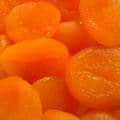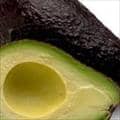Body's Healthy PH Levels
The pH (potential hydrogen) of any solution is the measure of its hydrogen-ion concentration. The higher the pH reading, the more alkaline and oxygen rich the fluid is. The lower the pH reading, the more acidic and oxygen deprived the fluid is. The pH range is from 0 to 14, with 7.0 being neutral. Anything above 7.0 is alkaline, anything below 7.0 is considered acidic.
Human blood stays in a very narrow pH range right around (7.35 - 7.45). Below or above this range means symptoms and disease. If blood pH moves to much below 6.8 or above 7.8, the body activity is no longer optimal and the metabolism is out of balance. The ideal pH for blood is 7.4
If you have a health problem, most likely you are acidic. Research shows that unless the body's pH level is slightly alkaline, the body cannot heal itself. So, no matter what type of modality you choose to use to take care of your health problem, it won't be as effective until the pH level is up. If your body's pH is not balanced, you cannot effectively assimilate vitamins, minerals and food supplements. Your body pH affects everything.
Total healing of chronic illness only takes place when and if the blood is restored to a normal, slightly alkaline pH.
An Imbalance In the body’s pH may lead to serious health concerns, including:
Hormone concerns
Cardiovascular weakness
Weight gain/loss
Bladder and kidney concerns.
Immune deficiency
Acceleration of free radical damage.
Structural system weakness, including brittle bones, hip fractures and joint discomfort
Stressed liver function
Low energy
Slow digestion and elimination
Yeast/fungal overgrowth.
Tumor growth
Cardiovascular weakness
Weight gain/loss
Bladder and kidney concerns.
Immune deficiency
Acceleration of free radical damage.
Structural system weakness, including brittle bones, hip fractures and joint discomfort
Stressed liver function
Low energy
Slow digestion and elimination
Yeast/fungal overgrowth.
Tumor growth
The truth is everyone has different nutrient requirements, but we all share one thing in common - we need to have alkaline blood to stay healthy.
An acidic balance will: decrease the body's ability to absorb minerals and other nutrients, decrease the energy production in the cells, decrease it's ability to repair damaged cells, decrease it's ability to detoxify heavy metals, make tumor cells thrive, and make it more susceptible to fatigue and illness.
An acidic pH can occur from, an acid forming diet, emotional stress, toxic overload, and/or immune reactions or any process that deprives the cells of oxygen and other nutrients. The body will try to compensate for acidic pH by using alkaline minerals. If the diet does not contain enough minerals to compensate, a build up of acids in the cells will occur.
There are two factors that are ALWAYS present with cancer no matter what else may be present. Those two factors are Acid pH and Lack of Oxygen. Can we manipulate those two factors that always have to be present for cancer to develop and by doing so may help reverse the cancer? If so, we need to learn how to manipulate those two factors.
Cancer needs an acid and low oxygen environment to survive and flourish within. Terminal cancer patients are around 1000 times more acidic than normal healthy people. The vast majority of terminal cancer patients possess a very low body pH. Why?
In the absence of oxygen, glucose undergoes fermentation to lactic acid. This causes the pH of the cell to drop from between 7.3 to 7.2 down to 7 and later to 6.5 in more advanced stages of cancer and in metastases the pH drops to 6.0 and even 5.7 or lower. Our bodies simply can not fight disease if our body pH is not properly balanced.
The normal human cell has a lot of molecular oxygen and a slightly alkaline pH. The cancer cell has an acid pH and lack of oxygen. Cancer cells cannot survive in an oxygen rich environment. At a pH slightly above 7.4 cancer cells become dormant and at pH 8.5 cancer cells will die while healthy cells will live.
To maintain health, the diet should consist of 60% alkaline forming foods and 40% acid forming foods. To restore health, the diet should consist of 80% alkaline forming foods and 20% acid forming foods.
Generally, alkaline forming foods include: most fruits, green vegetables, peas, beans, lentils, spices, herbs and seasonings, seeds and nuts.
Generally, acid forming foods include: meat, fish, poultry, eggs, grains.
NOTE: Although it might seem that citrus fruits would have an acidifying effect on the body, the citric acid they contain actually has an alkalinizing effect in the system.
A food's acid or alkaline forming tendency in the body has nothing to do with the actual pH of the food itself. For example, lemons are very acidic, however the end products they produce after digestion and assimilation are very alkaline so, lemons are alkaline forming in the body. Likewise, meat will test alkaline before digestion, but it leaves very acidic residue in the body so, like nearly all animal products, meat is very acid forming.
Alkaline to Acidic
| Highly Alkaline Forming Foods Baking soda, sea salt, mineral water, pumpkin seed, lentils, seaweed, onion, taro root, sea vegetables, lotus root, sweet potato, lime, lemons, nectarine, persimmon, raspberry, watermelon, tangerine, and pineapple. |
| Moderately Alkaline Forming Foods Apricots, spices, kambucha, unsulfured molasses, soy sauce, cashews, chestnuts, pepper, kohlrabi, parsnip, garlic, asparagus, kale, parsley, endive, arugula, mustard green, ginger root, broccoli, grapefruit, cantaloupe, honeydew, citrus, olive, dewberry, carrots, loganberry, and mango. |
| Low Alkaline Forming Foods Most herbs, green tea, mu tea, rice syrup, apple cider vinegar, sake, quail eggs, primrose oil, sesame seed, cod liver oil, almonds, sprouts, potato, bell pepper, mushrooms, cauliflower, cabbage, rutabaga, ginseng, eggplant, pumpkin, collard green, pear, avocado, apples (sour), blackberry, cherry, peach, and papaya. |
| Very Low Alkaline Forming Foods Ginger tea, umeboshi vinegar, ghee, duck eggs, oats, grain coffee, quinoa, japonica rice, wild rice, avocado oil, most seeds, coconut oil, olive oil, flax oil, brussel sprout, beet, chive, cilantro, celery, okra, cucumber, turnip greens, squashes, lettuces, orange, banana, blueberry, raisin, currant, grape, and strawberry. |
| Very Low Acid Forming Foods Curry, koma coffee, honey, maple syrup, vinegar, cream, butter, goat/sheep cheese, chicken, gelatin, organs, venison, fish, wild duck, triticale, millet, kasha, amaranth, brown rice, pumpkin seed oil, grape seed oil, sunflower oil, pine nuts, canola oil, spinach, fava beans, black-eyed peas, string beans, wax beans, zucchini, chutney, rhubarb, coconut, guava, dry fruit, figs, and dates. |
| Low Acid Forming Foods Vanilla, alcohol, black tea, balsamic vinegar, cow milk, aged cheese, soy cheese, goat milk, game meat, lamb, mutton, boar, elk, shell fish, mollusks, goose, turkey, buckwheat, wheat, spelt, teff, kamut, farina, semolina, white rice, almond oil, sesame oil, safflower oil, tapioca, seitan, tofu, pinto beans, white beans, navy beans, red beans, aduki beans, lima beans, chard, plum, prune and tomatoes. |
| Moderately Acid Forming Foods Nutmeg, coffee, casein, milk protein, cottage cheese, soy milk, pork, veal, bear, mussels, squid, chicken, maize, barley groats, corn, rye, oat bran, pistachio seeds, chestnut oil, lard, pecans, palm kernel oil, green peas, peanuts, snow peas, other legumes, garbanzo beans, cranberry, and pomegranate. |
| Highly Acid Forming Foods Tabletop sweeteners like (NutraSweet, Spoonful, Sweet 'N Low, Equal or Aspartame), pudding, jam, jelly, table salt (NaCl), beer, yeast, hops, malt, sugar, cocoa, white (acetic acid) vinegar, processed cheese, ice cream, beef, lobster, pheasant, barley, cottonseed oil, hazelnuts, walnuts, brazil nuts, fried foods, soybean, and soft drinks, especially the cola type. To neutralize a glass of cola with a pH of 2.5, it would take 32 glasses of alkaline water with a pH of 10. |
Source: www.altered-states.net, www.rense.com






 #1: White Beans
#1: White Beans #2: Dark Leafy Greens (Spinach)
#2: Dark Leafy Greens (Spinach) #3: Baked Potatoes (With Skin)
#3: Baked Potatoes (With Skin) #4: Dried Apricots
#4: Dried Apricots #5: Baked Acorn Squash
#5: Baked Acorn Squash #6: Yogurt (Plain, Skim/Non-Fat)
#6: Yogurt (Plain, Skim/Non-Fat) #7: Fish (Salmon)
#7: Fish (Salmon)
 #9: Mushrooms (White)
#9: Mushrooms (White) #10: Bananas
#10: Bananas